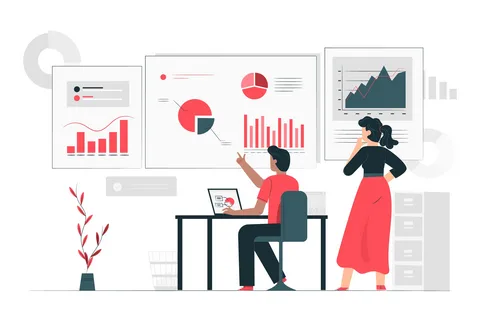How Can I Create a Culture of Experimentation in My Organization?

In today’s fast-paced business world, organizations that embrace experimentation and learning are more likely to innovate and succeed. A culture of experimentation allows teams to test new ideas, learn from failures, and continuously improve. By fostering an environment where testing and learning from failures are encouraged, and by implementing processes that support rapid experimentation and feedback, businesses can unlock creativity, agility, and long-term growth.
Why Is a Culture of Experimentation Important?
Many successful companies, from tech giants like Google and Amazon to startups and traditional businesses, thrive because they prioritize continuous experimentation. A culture of experimentation:
- Encourages innovation by allowing employees to explore new ideas.
- Reduces risk by testing assumptions before making large investments.
- Promotes data-driven decision-making, replacing guesswork with real insights.
- Increases adaptability, helping businesses stay ahead of market changes.
Steps to Build a Culture of Experimentation
1. Encourage a Growth Mindset
A growth mindset, as popularized by psychologist Carol Dweck, is the belief that abilities and intelligence can be developed through effort and learning. Leaders should promote the idea that failures are learning opportunities, not setbacks. When employees feel safe to take risks, they are more likely to experiment and innovate.
2. Lead by Example
Leaders play a crucial role in shaping an organization’s culture. If executives and managers openly discuss experiments, share lessons from failures, and actively participate in testing new ideas, employees will feel empowered to do the same.
3. Implement Rapid Experimentation Processes
To make experimentation a part of everyday work, organizations need structured processes that enable teams to test ideas quickly. Consider these approaches:
- A/B Testing – Running controlled experiments to compare different versions of a product, campaign, or process.
- Minimum Viable Product (MVP) – Launching a simplified version of a product to test its viability before full-scale development.
- Design Sprints – Intensive, time-boxed workshops that rapidly validate ideas through prototyping and user feedback.
By implementing these frameworks, organizations can create a repeatable and scalable approach to experimentation.
4. Create Psychological Safety
For experimentation to thrive, employees must feel comfortable sharing their ideas without fear of blame or punishment. Psychological safety encourages openness, constructive feedback, and collaboration. Leaders can cultivate this environment by:
- Recognizing and rewarding employees who take calculated risks.
- Framing failures as learning experiences.
- Encouraging teams to share both successes and setbacks.
5. Make Data-Driven Decisions
Encouraging experimentation means relying on data and insights, not opinions or assumptions. Businesses should:
- Establish clear metrics for evaluating experiments.
- Invest in analytics tools to track performance.
- Use data to inform strategic decisions, rather than relying on gut feelings.
6. Allocate Time and Resources for Experimentation
Experimentation should not be an afterthought—it needs dedicated time and resources. This could mean:
- Setting aside "innovation time" for employees to work on new ideas (e.g., Google’s famous 20% time).
- Providing funding for small-scale tests and pilots.
- Investing in tools and technology that facilitate experimentation.
7. Encourage Cross-Functional Collaboration
Innovation often happens at the intersection of different disciplines. Encourage collaboration between teams such as product development, marketing, data science, and customer support. When diverse perspectives come together, the quality of experiments and insights improves.
8. Foster a Feedback Loop
A culture of experimentation thrives on continuous learning. Ensure that teams:
- Document and share the results of experiments.
- Analyze insights to improve future tests.
- Refine and iterate based on feedback.
By making experimentation a learning process rather than a one-time event, organizations can continuously improve and adapt.
Overcoming Common Barriers to Experimentation
Even with the best intentions, organizations may struggle to adopt an experimental mindset. Here’s how to tackle some common challenges:
| Challenge | Solution |
|---|---|
| Fear of failure | Normalize failure as a learning experience, and reward calculated risks. |
| Resistance to change | Communicate the benefits of experimentation and involve employees in the process. |
| Lack of resources | Start small—run low-cost experiments before scaling up. |
| Slow decision-making | Create clear guidelines for rapid testing and approvals. |
Conclusion
Creating a culture of experimentation is not about taking reckless risks—it’s about structured learning, rapid iteration, and data-driven decision-making. By fostering an environment where testing and learning from failures are encouraged, and by implementing processes that support rapid experimentation and feedback, organizations can drive innovation, improve efficiency, and stay ahead in an ever-changing business landscape.
- Arts
- Business
- Computers
- Jocuri
- Health
- Home
- Kids and Teens
- Money
- News
- Recreation
- Reference
- Regional
- Science
- Shopping
- Society
- Sports
- Бизнес
- Деньги
- Дом
- Досуг
- Здоровье
- Игры
- Искусство
- Источники информации
- Компьютеры
- Наука
- Новости и СМИ
- Общество
- Покупки
- Спорт
- Страны и регионы
- World


